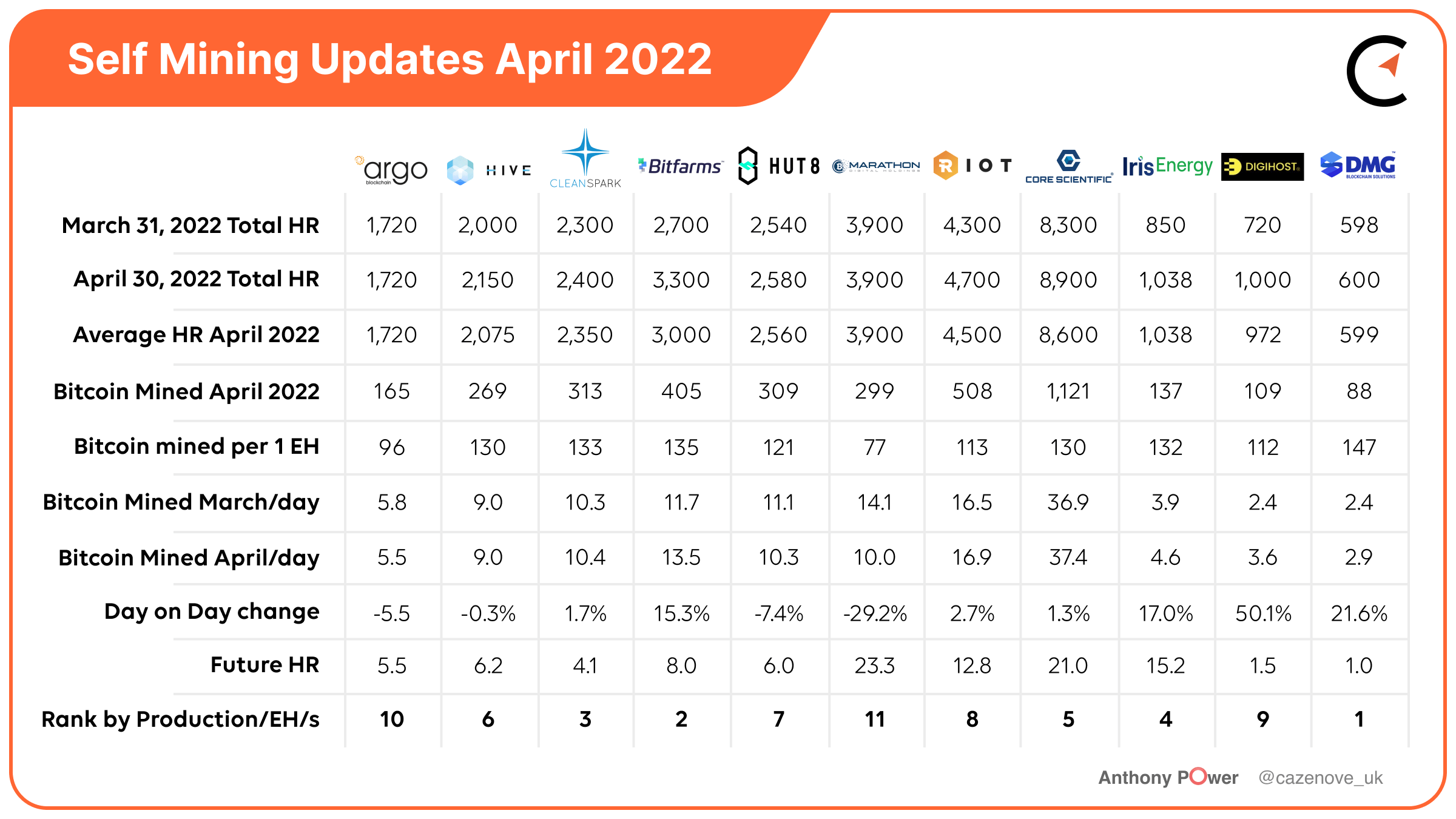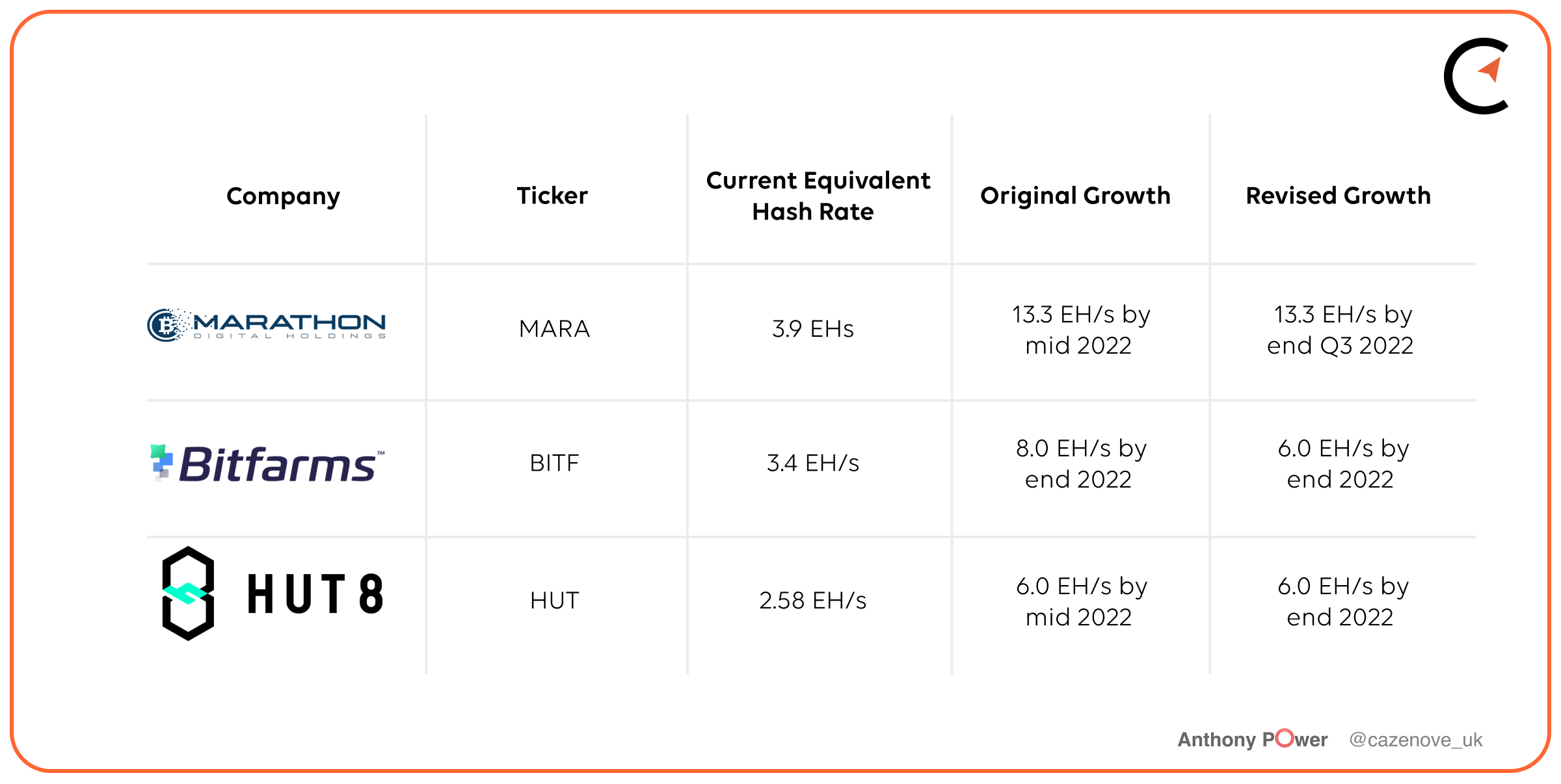Bitcoin was created and introduced in 2009 by an anonymous developer or group of developers using the name Satoshi Nakamoto. As an investment, Bitcoin has been gaining more and more adoption in recent years, and as one of over 13,000 crypto coins, it is the most prominent with a current market cap of $581 billion and a dominance of 46% of the total market cap of cryptocurrencies, according to Trading View.
Investing directly in Bitcoin mining companies, however, has not had the same rise to prominence as Bitcoin directly. It wasn’t until 2017 that Hive Blockchain became the first publicly traded Bitcoin mining company in North America on the Toronto Venture Exchange under the ticker symbol HIVE. Since then, the number has grown considerably with 29 listed Bitcoin mining stocks in North American exchanges alone.
As a new asset class, valuing mining stocks can be a difficult ordeal for investors. Yet public disclosures and an understanding of how a strong mining firm should organize and execute can be aids. The following factors are not exhaustive but are important when carrying out due diligence on any Bitcoin mining company.
Disclaimer: This material is not intended to be relied upon as a forecast, research or investment advice, and is not a recommendation, offer or solicitation to buy or sell any investment or to adopt any investment strategy.
Management team
It's important to ensure that the company has the right level of expertise on the board and senior management team. Having experience across finance, infrastructure and renewables is essential given the interdisciplinary nature of Bitcoin mining. Operational leadership experience in managing large infrastructure and energy resources and being able to deliver highest standards of safety and ESG compliance would also be high on the list for consideration.
Management team members can be researched on company websites and cross-vetted on platforms such as LinkedIn.
Operational performance
A key metric to consider when comparing each Bitcoin mining company is the operational performance. Not all miners are created equal and the differences in mining output by company is really important when compared to their peer miners.
In the table below, 11 of the larger publicly traded North American miners, who provide monthly mining updates, are included.

There is quite a disparity between the performance of DMG Blockchain (DMGI) – which effectively mined 147 Bitcoin for each EH/s in April – and Marathon Digital’s (MARA) 77 Bitcoin per EH/s. If poor performance becomes a regular occurance, then it's a potential red flag of a company's strategy.
Read: Understanding Public Miner Performance
Growth and future procurement
Future hashrate growth is emphasized far too much, when really the focus should be on the present hashrate. The question should always be: is the hashrate currently disclosed by miners achieving the amount of Bitcoin expected?
If we look at the examples in the table below, three of the larger North American listed miners have now revised their growth and timelines in the last three weeks.

If you're only focused on the future hashrate of Bitcoin mining companies, you're effectively ignoring the cash flow that these companies generate now. Even with the Bitcoin price of $30,000, S19s ASIC miners are currently able to earn between $17 and $18 per day.
Nobody can accurately predict the future price of Bitcoin, but what can be calculated is that with an understanding of current performance, and with an element of reasonableness, you can determine or predict the expected output in a day, one month or even one year, based on assumptions of network growth and participation.
Cost of production
The cost of the cash flow is also a really important metric. By understanding both operating and capital costs you can also determine the total cash cost of mining one Bitcoin. For North American miners, costs currently range anywhere from $12,000 to $20,000 per Bitcoin. Even at the latter amount, Bitcoin mining is showing profits of 50% from a cash accounting perspective.
The marginal cost of production (i.e the cost of producing one more Bitcoin) is another component of cost production valuation. By comparing the cost to produce a whole Bitcoin versus the marginal cost, a better understanding of the operational integrity of miners can be found.
Concluding thoughts
A lot of new companies are popping up in Bitcoin mining, banking on the simplistic model of plug-in-to-profit. However, it's far more sophisticated than first glance would indicate. Deploying one miner is not the same as managing 10,000 miners at a large facility. To also keep miners economical during the bear markets, moreover, is a business where experience really matters.
If a company does not clearly understand the correlation between Bitcoin price and hashrate, this could also raise a red flag. A lot of individuals may have expertise in raising capital but have no experience in operational management of a mining company or building infrastructure. Without these three components a company is generally setting itself up to fail.
If you're going to consider Bitcoin mining companies as an alternative investment, consider the management of the company and ensure they have the requisite skill sets to deliver and manage large-scale data centers. Review the current performance of the Bitcoin miners, most of which provide regular monthly updates, from which you can determine who the better operators are. Consider the gross and operating margins that these mining companies are working with. Avoid any red flags, especially when something sounds too good to be true, because it generally is.

